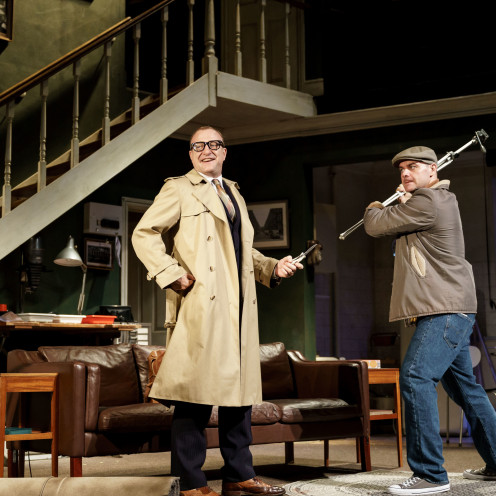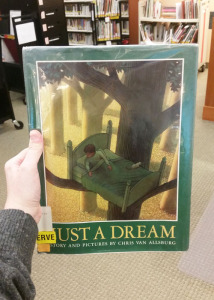Wait Until Dark is the last of just three crime dramas penned by Frederick Knott. Published in 1966, it was made famous by the 1967 film of the same name starring Audrey Hepburn leading to several on-stage revivals, on tour with The Original Theatre Company most recently. The action follows a trio of criminals – Mike, Croker, and Roat – as they attempt to reclaim a special doll that has fallen into the care of photographer Sam and his blind wife, Susy. Despite Susy’s best efforts to placate them, with the help of petulant girl-upstairs Gloria, the conniving crooks attempt to use Susy’s inability to see against her. However, they soon find out that there’s more to her than meets the eye.
Remarkably, Karina Jones is the first visually impaired actor to play the blind character despite the play being in theatres since the ‘60’s. In conversation with writer and broadcaster Vicky Edwards, Jones discusses this inequality: “Producers and directors should give disabled roles to disabled actors. A blind person wouldn’t be auditioned for, say, Desdemona – we’re not there yet – but with roles that are written as disabled or impaired I think it is only fair that they should be played by disabled actors.” (Wait Until Dark programme.) Whilst commendable, it is distressing to learn that the representation of disability in the entertainment business has not progressed since the play’s inception.
The best performances amongst the cast lie with Karina Jones and Shannon Rewcroft. Rewcroft plays Gloria with conviction, crucially providing the drama with a desperately needed strand of humour. Jones, on-stage for almost the entirety of the play, remained captivating throughout as she portrayed the character’s rising panic, while she carefully navigated the beautifully crafted set. Designed by David Woodhead, the set was a realistic recreation of a 1960’s basement apartment, complete with mid-century furniture and décor. Unfortunately, much of the climax between our heroine and head honcho Roat was lost as furniture key to the growing tension, located upstage, was blocked by the other furnishings.


The criminals were played to varying degrees of success. Tim Treloar provided Wait Until Dark with its menacing villain, Roat, injected the character with a touch of insanity, referring to his accomplices as “children” and rocking back and forth, wide-eyed, boasting of his dastardly plans. When combined with the overly complicated plot to gain access to Susy’s apartment, the authenticity of the role falls into absurdity – although I hasten to add that this is not down to the quality of the performance by Treloar. Thomas McCarron’s Mike (Jack Ellis was injured) and Graeme Brookes’ Croker, provided brief moments of genuine menace. An impressive achievement due to both characters being bumbling and inefficient fools.
Perhaps where Wait Until Dark falls down most is in its writing. Knott’s dated melodrama relies heavily on the audience suspending all conceivable disbelief as the plot holes apparent at the beginning of the play become hopelessly glaring by close of curtain. The rising action of the play is hugely dependent on the naivety of both characters: Sam unwittingly brings home a doll-cum-heroin-repository as a kind favour for a completely random woman he meets at the airport; he’s tricked twice by Mike, Croker, and Roat into leaving his apartment empty; and Susy seemingly lets anyone and everyone into her basement apartment. In her unfortunate case, it seems that everyone is out to get her.
Stock characters (the villain, the dopey sidekicks, the brave heroine, the smart-mouthed sidekick) become hugely clichéd amongst the flurry of nuanced modern melodramatic characters that have graced imaginations on-stage and on-screen in the years since 1966. Fans of the genre need looks no further back than Todd Haynes 2015 film Carol, starring Oscar-nominee Cate Blanchett. Although in keeping with the general attributes of melodrama, Haynes updates the genre by queering it and in doing so brings it into the twenty-first century, further exposing Knott’s clunky writing as problematic and outdated. Furthermore, the popularity of sophisticated big screen thrillers and advancement of CGI technology supersedes the novelty of Wait Until Dark’s total blackout during the play’s denouement. However, it must be said that such a device and the overall concept of throwing sighted characters into temporary blindness thrilled contemporary audiences and has been translated into film countless times: from violent horror Don’t Breathe to that climactic scene in The Silence of the Lambs.
Wait Until Dark continues its tour across the country in locations including Malvern, Southend and Cardiff. More information is on their website.
– Emily Earp
All images from https://exeternorthcott.co.uk/calendar/wait-until-dark/
Advertisements Share this:





